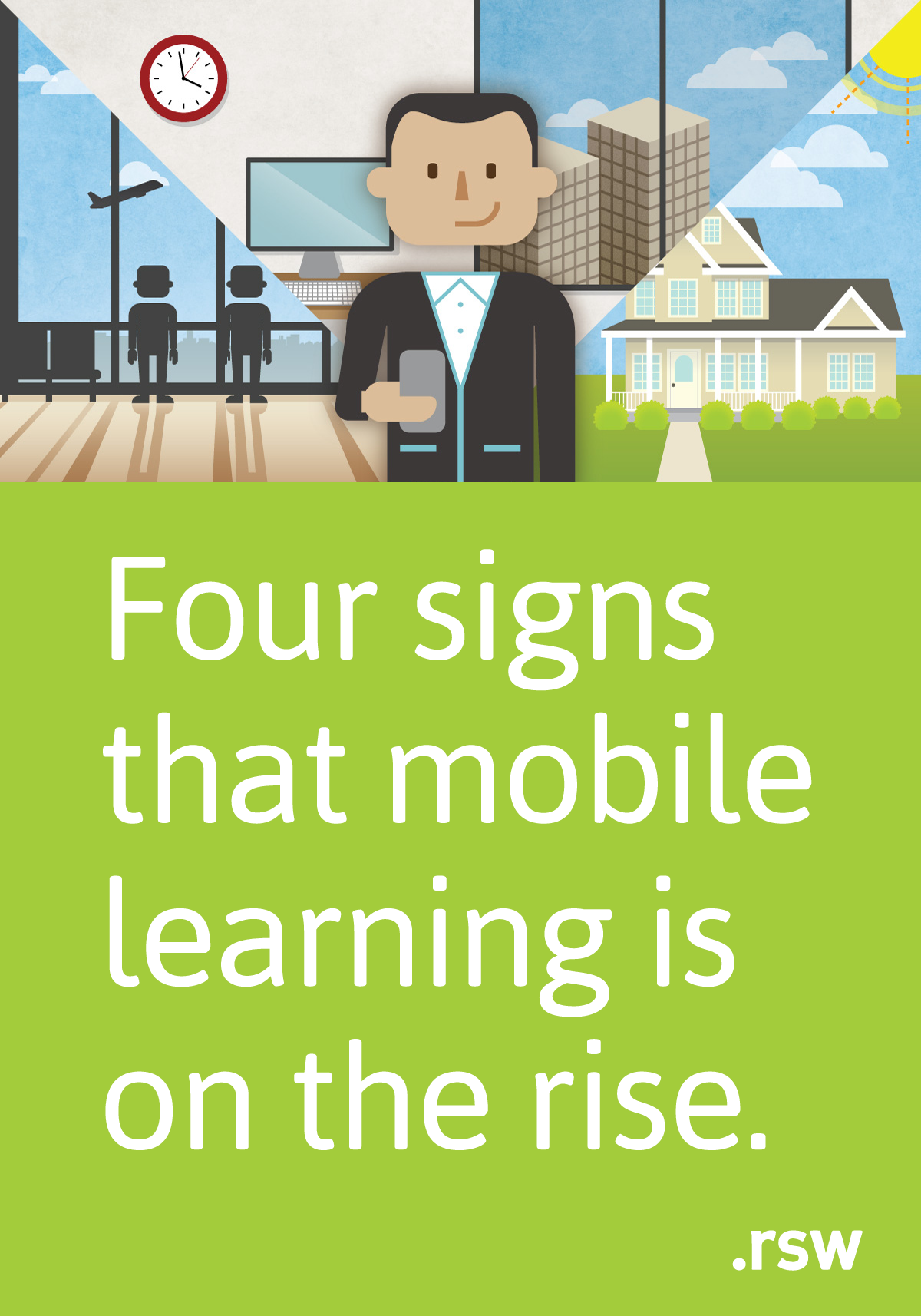
 Online professional development is about to undergo enormous changes thanks to our demand for mobile devices. By the end of 2015, Gartner projects that 320 million tablets will have been sold. For businesses trying to make learning more effective, this is good news: Employees love using their mobile devices and making required training available on mobile will lead to a 40 percent increase in productivity, according to a recent survey by Mobile Helix.
Online professional development is about to undergo enormous changes thanks to our demand for mobile devices. By the end of 2015, Gartner projects that 320 million tablets will have been sold. For businesses trying to make learning more effective, this is good news: Employees love using their mobile devices and making required training available on mobile will lead to a 40 percent increase in productivity, according to a recent survey by Mobile Helix.
Today’s Employees Work in an “Always On” Workplace
As working remotely becomes more common, it’s not surprising that employees want to access training materials from mobile devices. Leaders should keep in mind that employees access work materials at all hours of the day—so why not make training materials available at all hours, too?
ThinkingPhones recently discovered that 48 percent of employees handle work-related correspondence before leaving for work in the morning. MobileIron also discovered that Gen M, the generation of professionals who use a mobile device for work, rely on these devices to mix their work and personal lives.
Attention Spans are Dwindling, but Mobile’s Flexibility is Increasing
Much like the bite-sized information absorbed through social media, mobile learning is a great solution for employees on the go. Employers can design mobile learning programs in manageable units that can be stopped and resumed at a later time.
When learning programs are optimized for mobile, employees can access the same information from the office or a remote location. The ability to complete training courses at an individual pace makes mobile an excellent tool to train new employees or offer specific courses.
Audio is Having a Moment, and Your Training Programs Can Too
Thanks to the recent popularity of podcasts like Serial, audio programs are becoming more relevant. The modality principle suggests that many people learn better from audio narration than text, which means podcasts are a viable training option.
Nearly three-quarters of mobile learning programs leverage audio and video players. Releasing shorter, bite-sized audio training, like webinars, TED talks, or YouTube videos, on a regular schedule might create the same kind of interest as a podcast.
Feedback Matters to Management and Employees
When developing mobile learning courses, companies can include ways for employees to send feedback to management, or vice versa. Supervisors should also ask employees which courses were most useful and what kinds of resources they want to see in the future. This will help set content priorities and shows that proactive steps are being taken to meet everyone’s needs.
More than ever, employees are looking for clear career paths from their leaders, and mobile learning could be management’s solution to creating a well-rounded training program for them. With the rising popularity of mobile learning, now is the time to see how, or if, it fits into your programs to make them more effective.
Need help connecting with employees through internal communications? Connect with RSW.






Leave A Comment